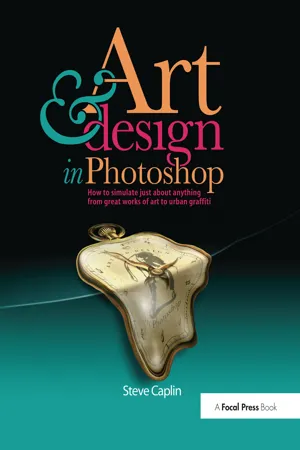
Art and Design in Photoshop
Steve Caplin
- 256 páginas
- English
- ePUB (apto para móviles)
- Disponible en iOS y Android
Art and Design in Photoshop
Steve Caplin
Información del libro
Fancy designing your own classic and contemporary movie posters, books and magazine covers?Feel like turning your photographs into works by Turner, Matisse and Magritte?Want to create illustrations in the styles of The Simpsons, steampunk and Victorian engravings?Then you need Art and Design in Photoshop. In this unique book, acclaimed master of photomontage and visual trickery Steve Caplin shows you how to stretch your creative boundaries. Taking the same tried-and-tested practical approach as his best selling How to Cheat in Photoshop titles, Steve's step-by-step instructions recreate a dazzling and diverse array of fabulous design effects. You'll learn how to design everything from wine labels to sushi cartons, from certificates to iPod advertising, from textbooks to pulp fiction.Written by a working pro, the clear guidelines pinpoint exactly what you need to know: how to get slick-looking results with minimum fuss, with a 16-page Photoshop Reference chapter that provides an at-a-glance guide to Photoshop tools and techniques for less experienced users. Steve explains both typography and the design process in a clear, informative and entertaining way.All the images, textures and fonts used in the book are supplied on the downloadable resources. Imaginative, inspirational and fun to use, this book is a must-have for every creative Photoshop user, both amateur and professional.
Preguntas frecuentes
Información
Poster design
- A large, usually printed placard, bill, or announcement, often illustrated, that is posted to advertise or publicize something.
- An artistic work, often a reproduction of an original painting or photograph, printed on a large sheet of paper.
04.01 Victorian playbill








